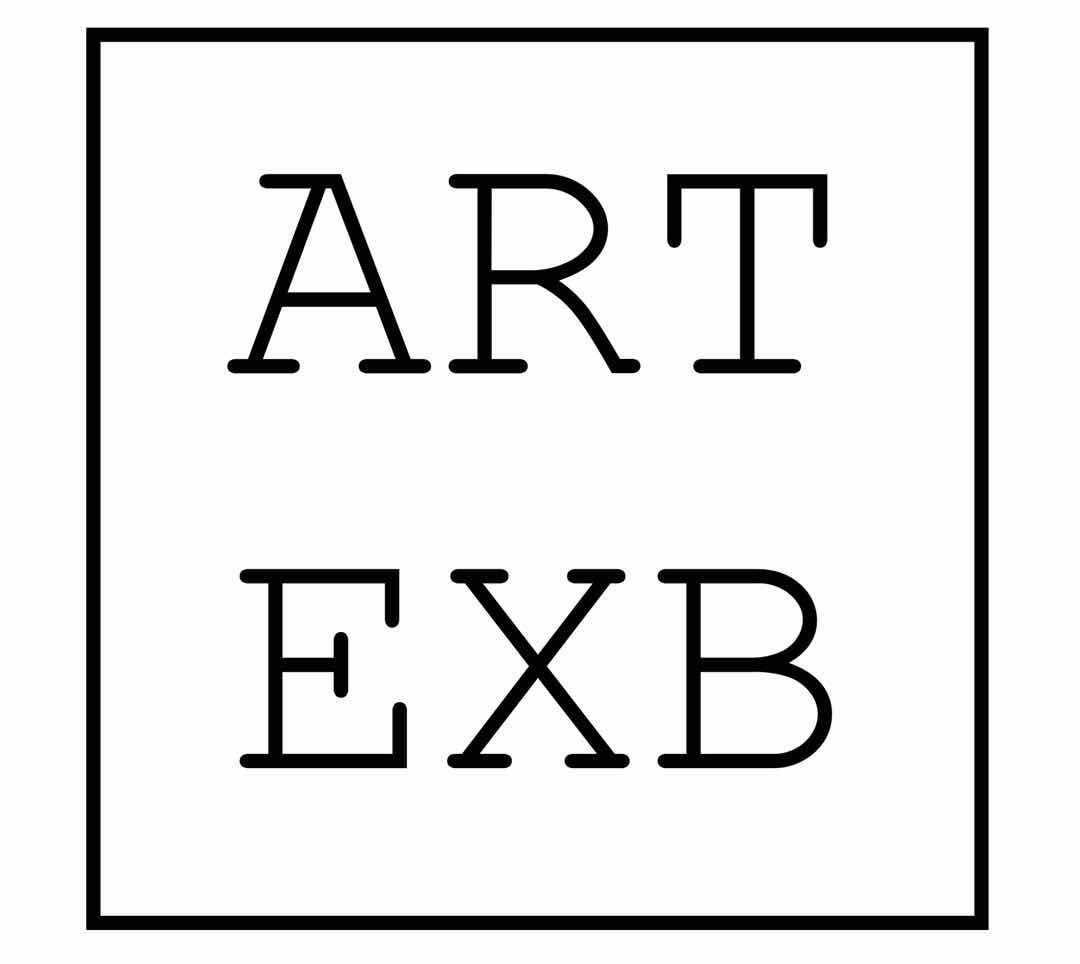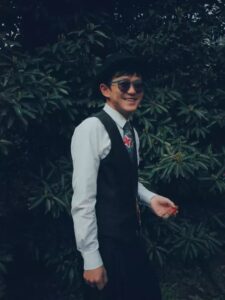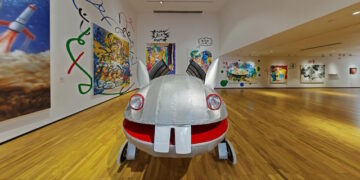高瑀,1981年生于贵州,2003年毕业于四川美术学院,获学士学位,现工作生活于重庆。
高瑀生长在普通的贵州家庭,很早就开始迷恋古代哲学。因为怕妈妈不理解,他常常躲在被子里偷偷读老子的书。中国古代文学和漫画书构建了他的哲学倾向,使这个看似单薄的时髦青年,具备了常人难以察觉的成熟心智。分析这些年少的爱好也许能够更进一步了解高瑀的艺术取向:他的文学主题来自于中国古代典籍,画面的处理受到漫画影响,古代哲学思想更是形成他对艺术与生活的洒脱风度的动因。
作为经典中国式主题的熊猫经常出现在服装、文学或是漫画中,且都是憨厚温顺的形象。然而,在高瑀的作品中,他打破常规塑造了一个暴躁易怒的熊猫GG。高瑀不仅不喜欢熊猫,甚至很讨厌它,在他看来,这个懒惰的动物根本不配作国家的 “国宝”,以熊猫代表中国简直荒谬至极,所以他创造的熊猫形象是那么的暴力、血腥。在2002年,他画了第一张贪婪地吃竹子的熊猫,这个有点自传式的角色从此一直出现在高瑀的画布上。在高瑀平面化且色彩简单的画面中,我们可以跟着GG和他偶尔出现的女朋友一起探险。
最近,高瑀开始把他的熊猫GG引入更广阔的艺术舞台。在动画片里,熊猫化身成孙悟空,与 “超人” 展开一场传奇之战。在 “熊猫小堂” 里,GG的形象出现在各种生活用品中:T恤、水杯、沙发、墙纸,这些精心设计的产品展示出高瑀对于流行文化和消费文化的兴趣。今天高瑀所谓 “符号的复制” 给他带来了名气和争议,不过,高瑀对此并不关心,他还是一如既往地轻松画下去。如果你问他熊猫会画到什么时候, 他也说不好——只要有人还继续着 “熊猫的崇拜”,高瑀就有动力去创作下一张画。
Gao Yu, born in 1981, in Guizhou, China, graduated from Sichuan Academy of Fine Arts in 2003. He currently lives and works in Chongqing.
Born into what he calls an “average” Sichuanese family, Gao Yu was fascinated by Chinese philosophy at an early age, reading Lao Zi’s books under covers at night because he wasn’t sure if his mother would understand his premature interest. His philosophical tendencies were tempered with a healthy diet of Kung Fu novels, ancient Chinese classics filled with wartime drama, and comics––plenty of comics. These childhood hobbies can perhaps elucidate Gao Yu’s body of work: his literary themes were borrowed from the Chinese cannon, his comic-addiction influenced his style and the manner in which he connects his main character across canvases, lastly, certain ancient philosophies have influenced his easy-going manner and let-it-be approach to art.
And there is the panda, otherwise known as “GG.” However, the birth of this feisty creature was not one inspired by love, instead by Gao Yu’s intense feelings hatred for his sometimes bloody, other times, heroic national symbol. The “lovable,” but lazy panda, in his opinion, is better suited to being a stuffed bear, not a symbol of national pride. The adventures of GG and his on again off again girlfriend can be followed across the panels of his very two-dimensional, purely colored works. In early 2002 he began with painting his ravenous version of the bamboo-chewing bear, and the character stuck with him, reincarnated in what seems to be a loosely autobiographical tale that, instead of appearing on the printed sheets of a comic, unfolds slowly over his canvases. Often the bear’s dress embodies classical Chinese themes, or a painting’s composition, or the use of a literary title.
Recent experiments with animation have seen this constant companion take the shape of the Monkey King in a legendary battle with a Superman-like figure, and a product design series “Panda Box” sees him reproduced across T-shirts, drinking glasses, sofa chairs and wallpaper, revealing Gao Yu’s inherent attraction to pop culture and mass marketing. Today, Gao Yu’s compositional themes, his repetition and the supposed “logo-ification” of his GG character have bounced him into renown and garnered its fair share of criticism. But he shrugs it all off easily; if you ask him how long he’ll be working with his bear, he doesn’t know, I guess that as long as a public is buying into the “myth of the panda” Gao Yu will have fodder for his next work.


